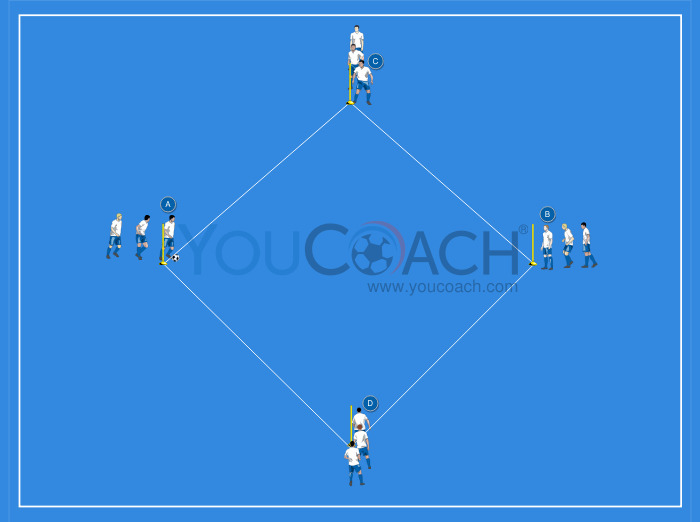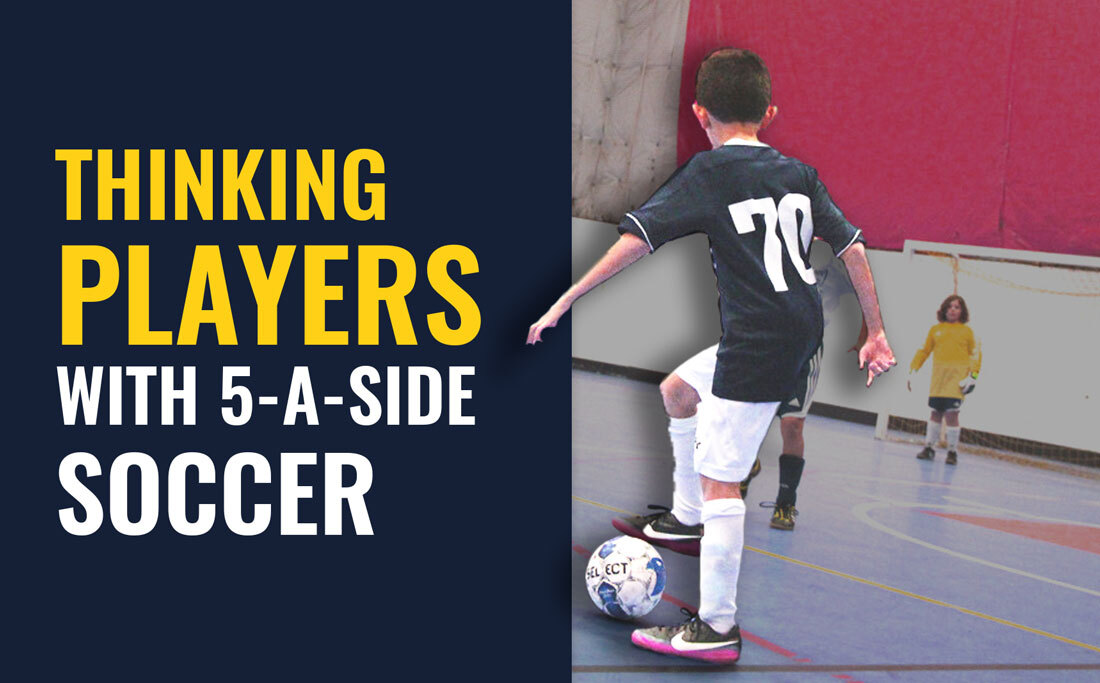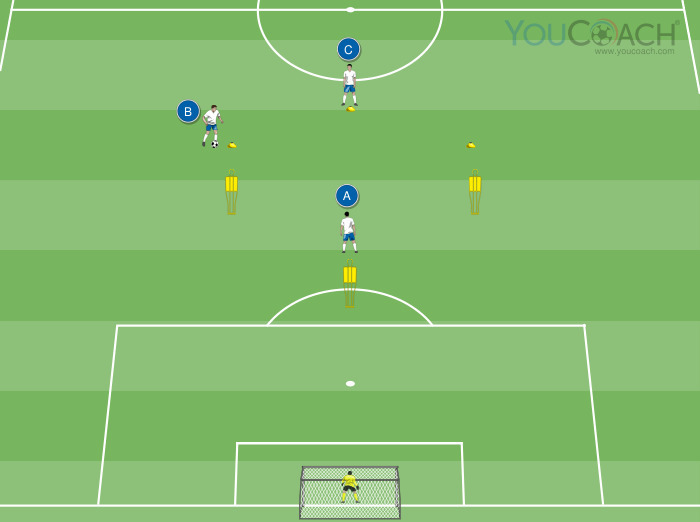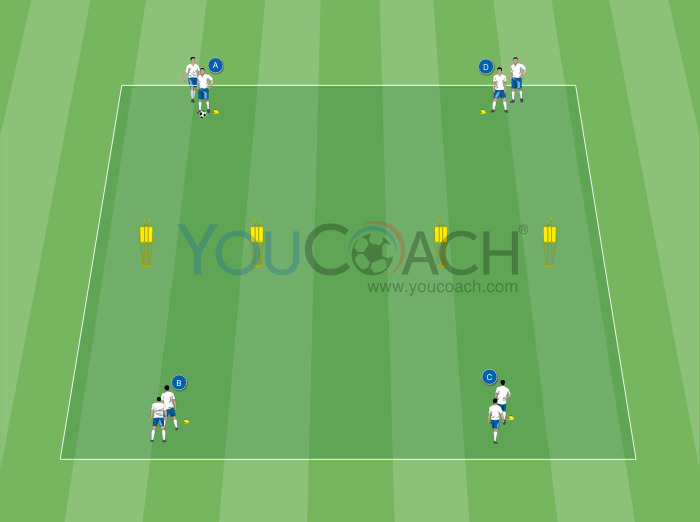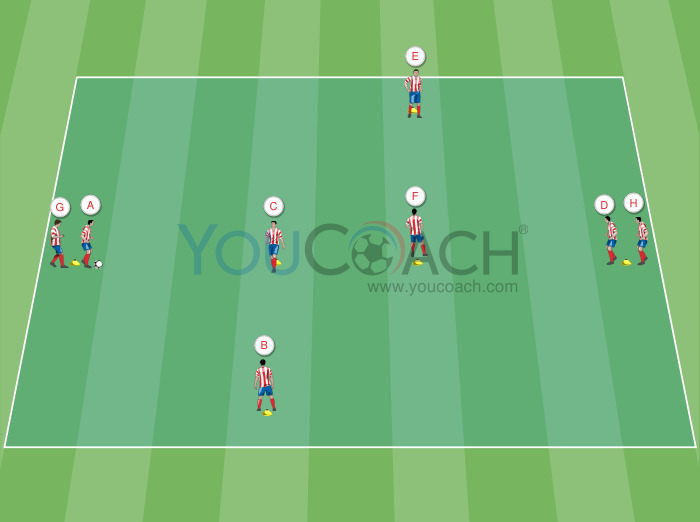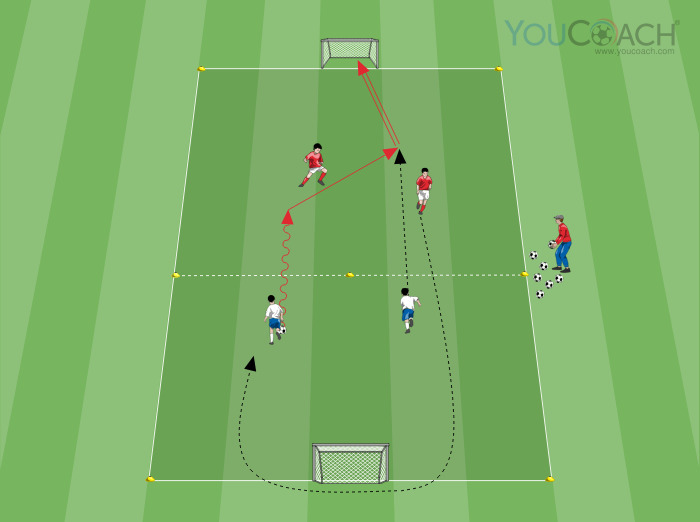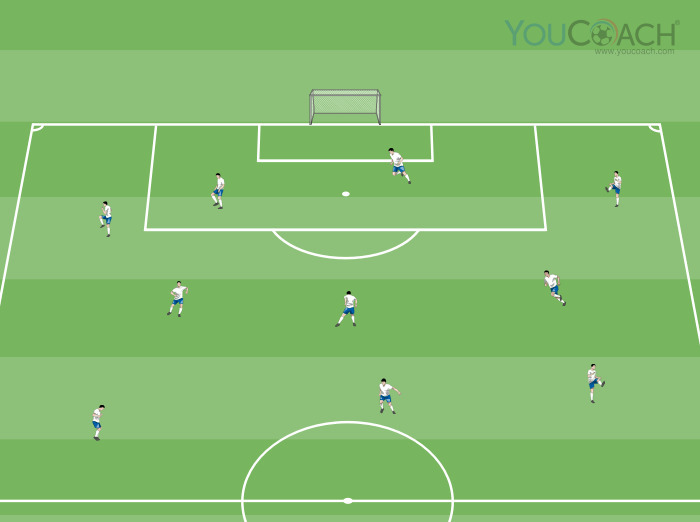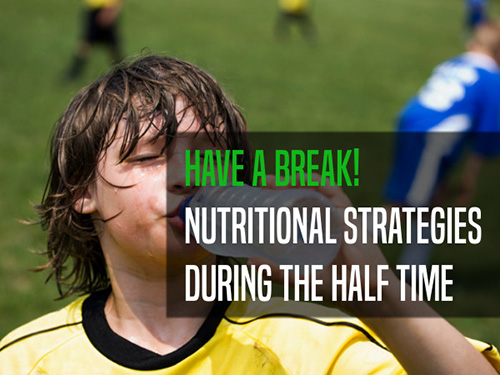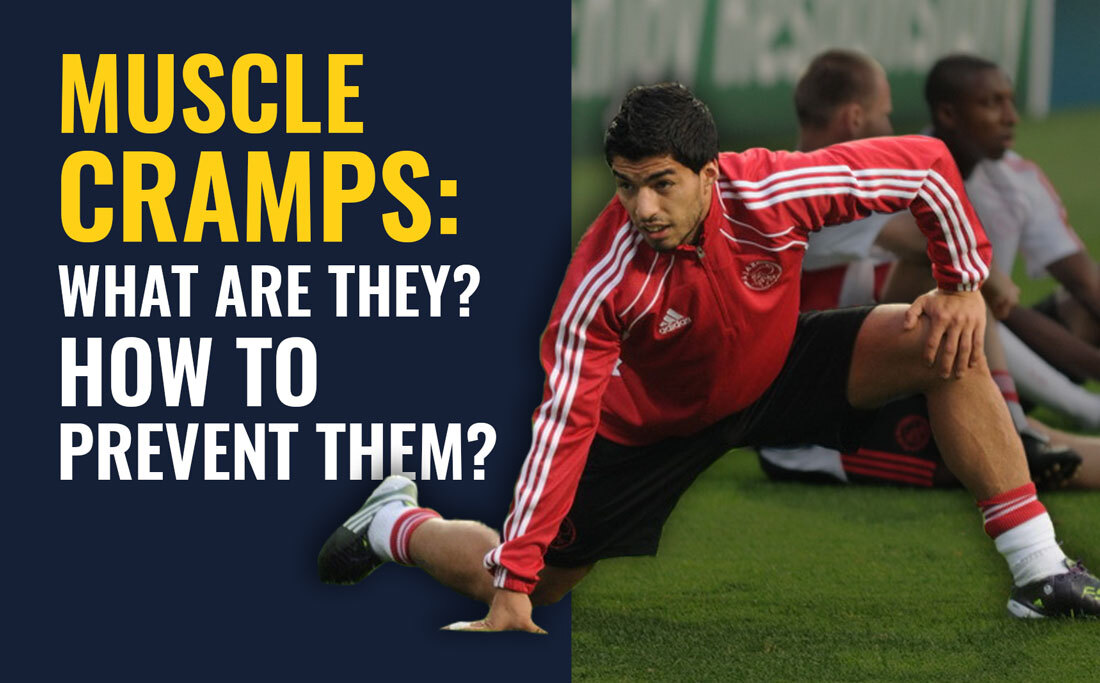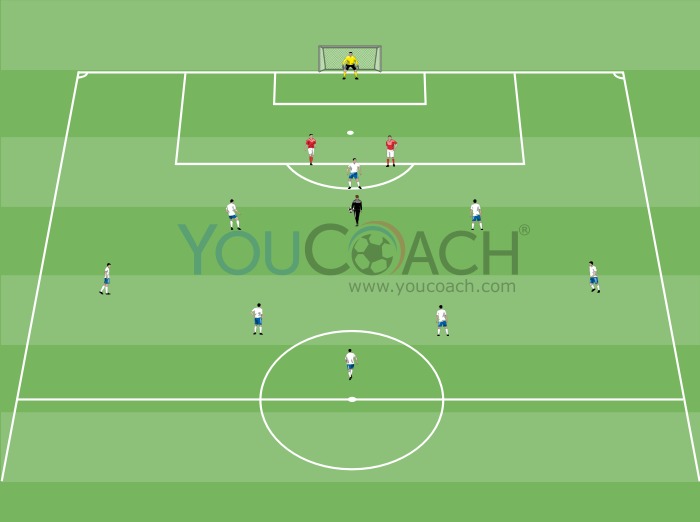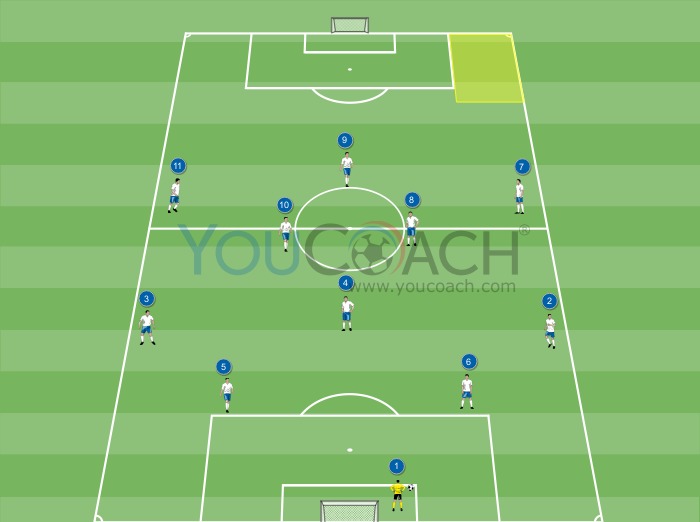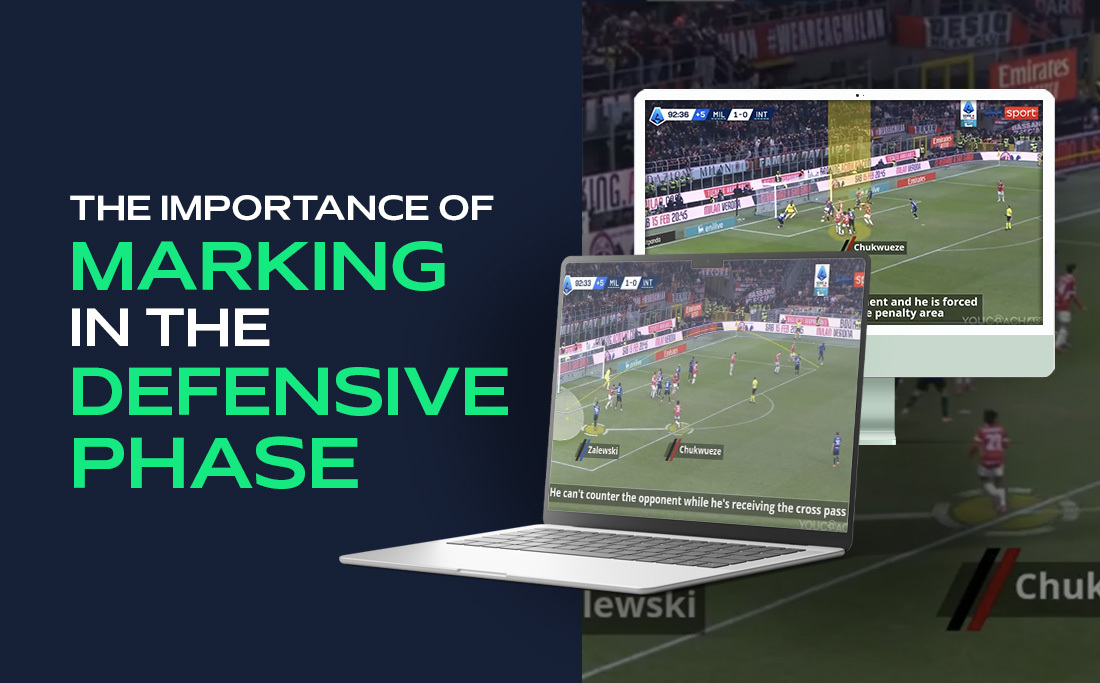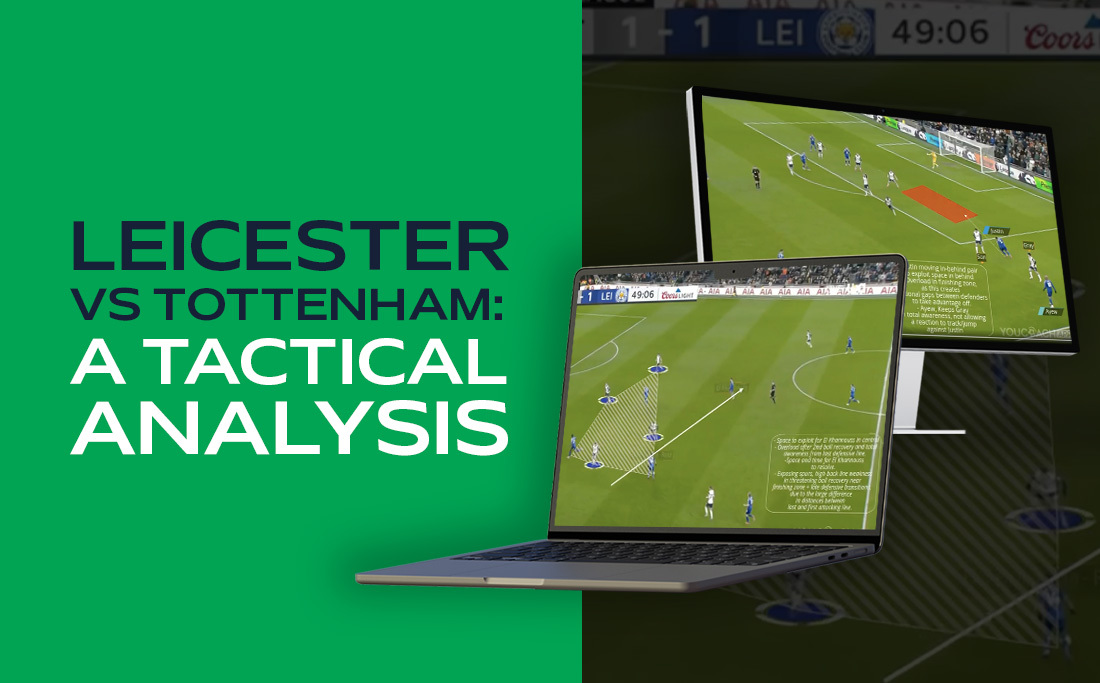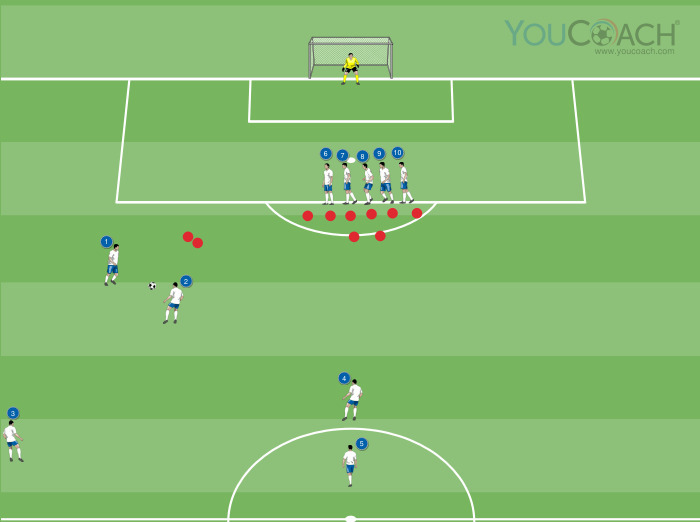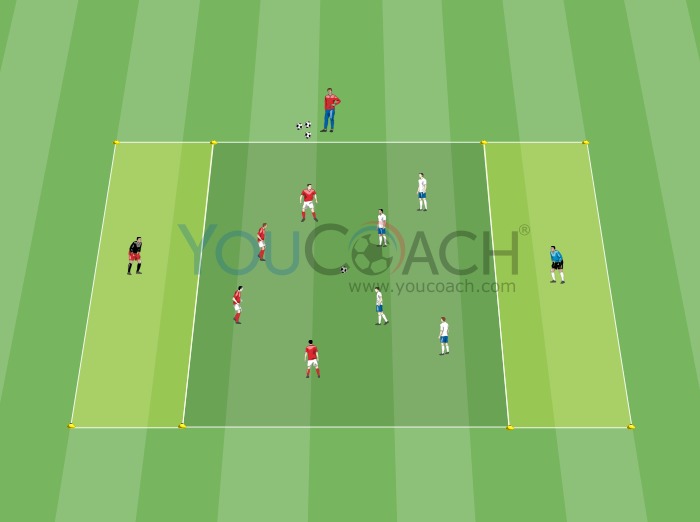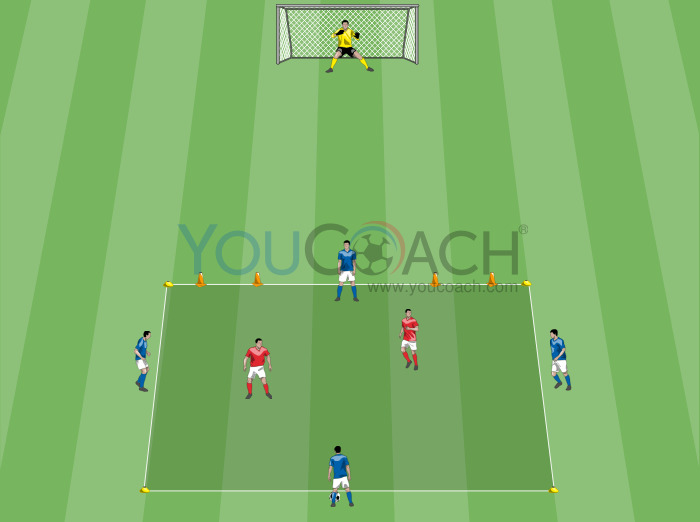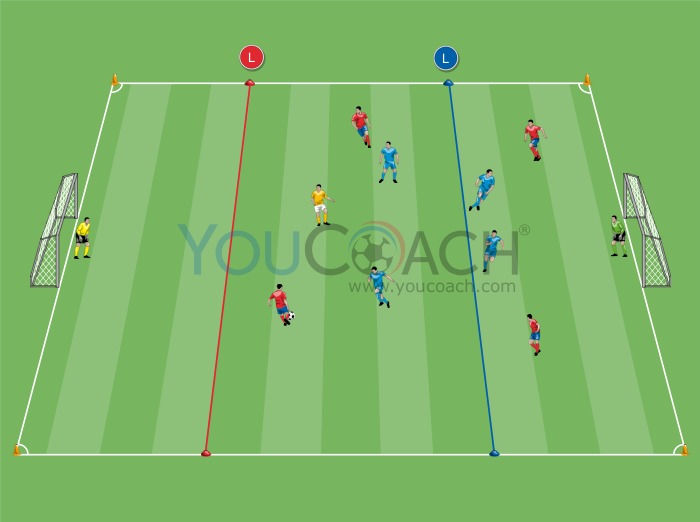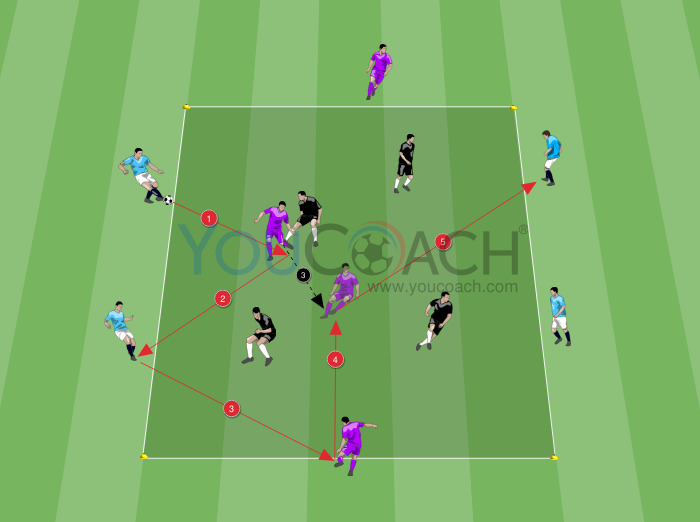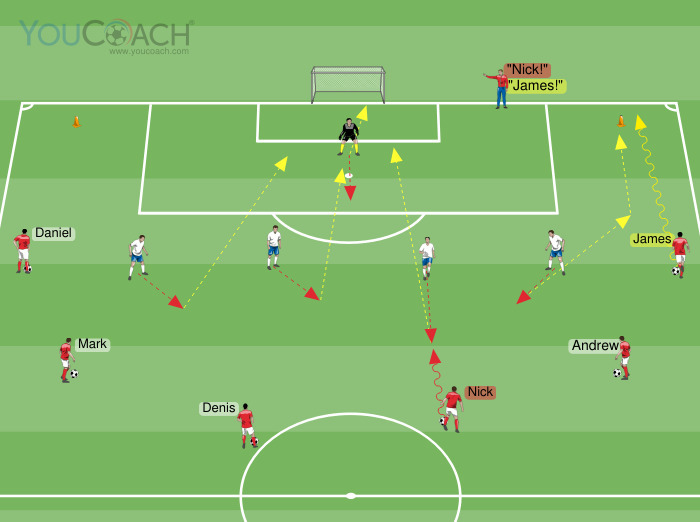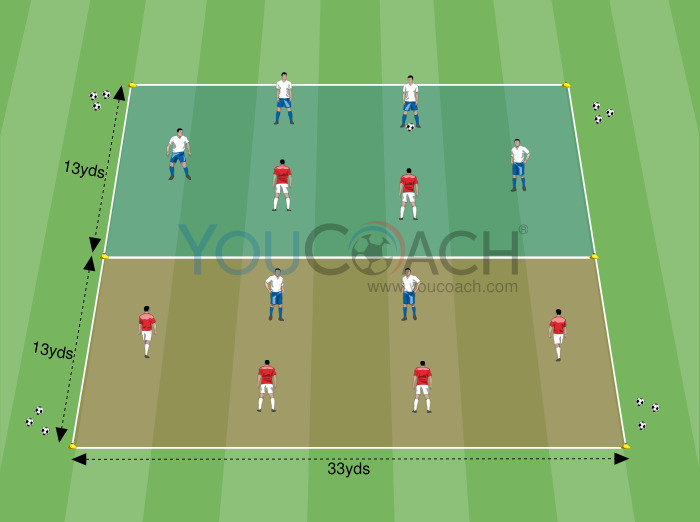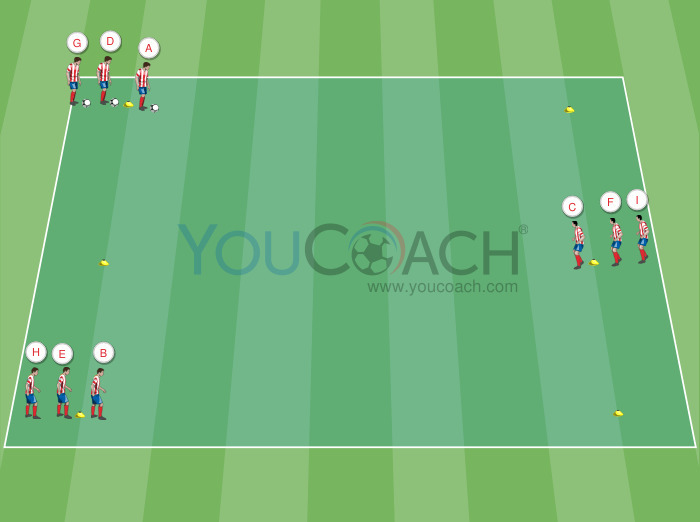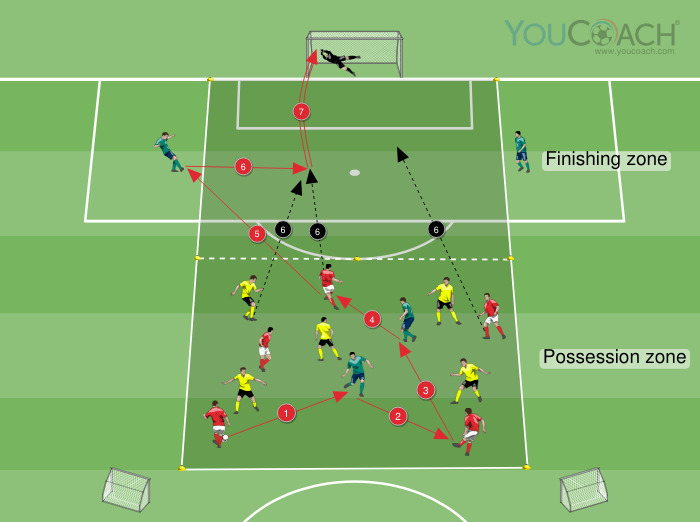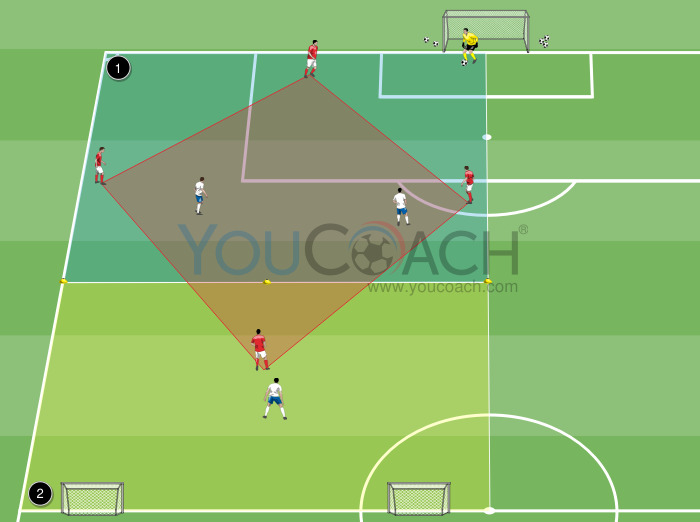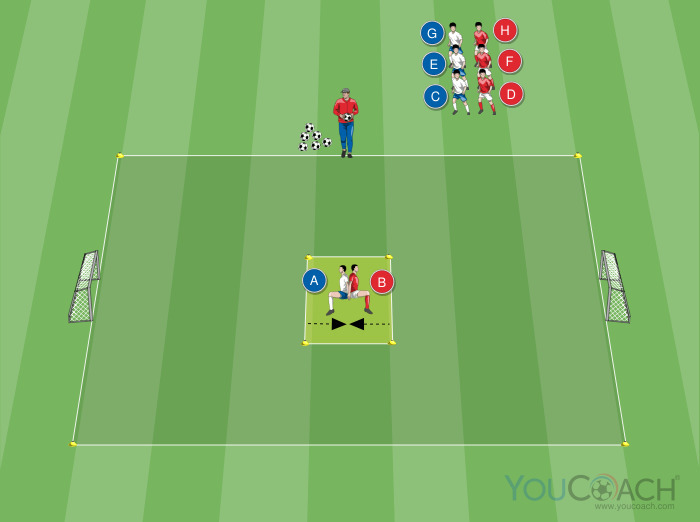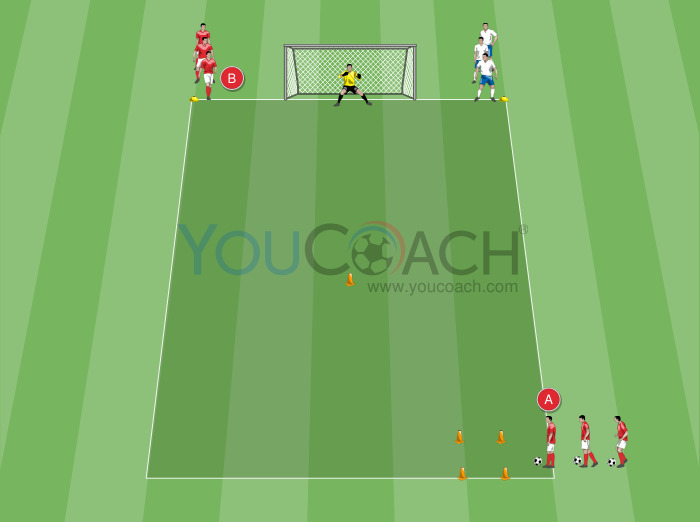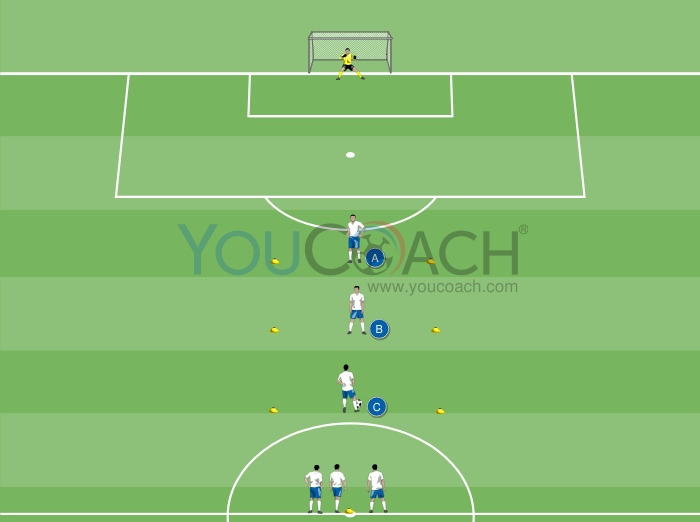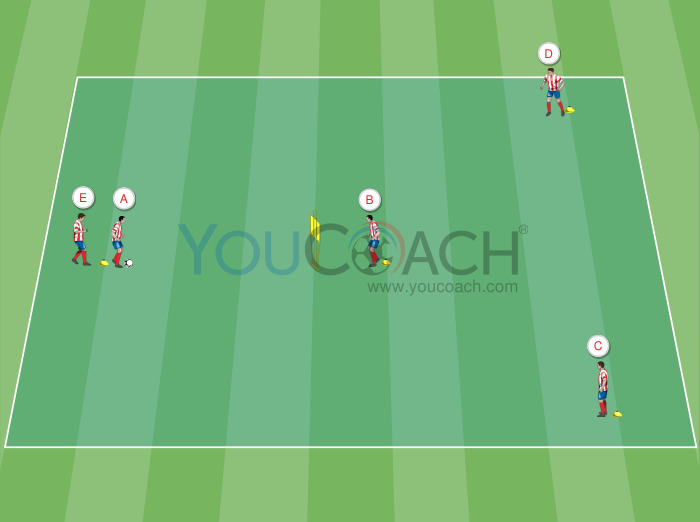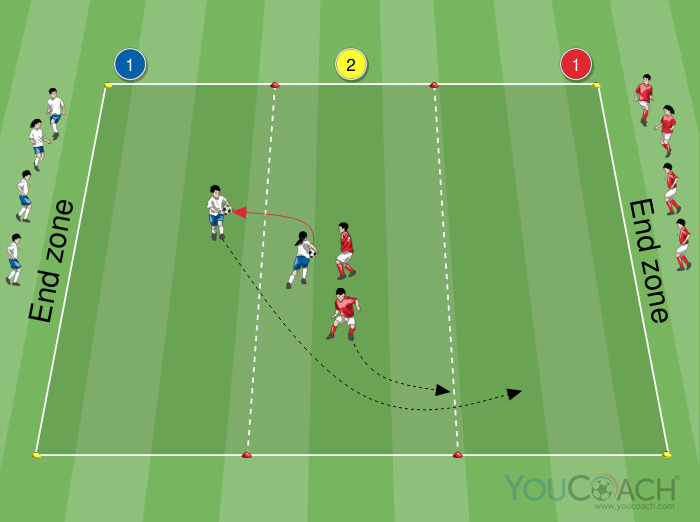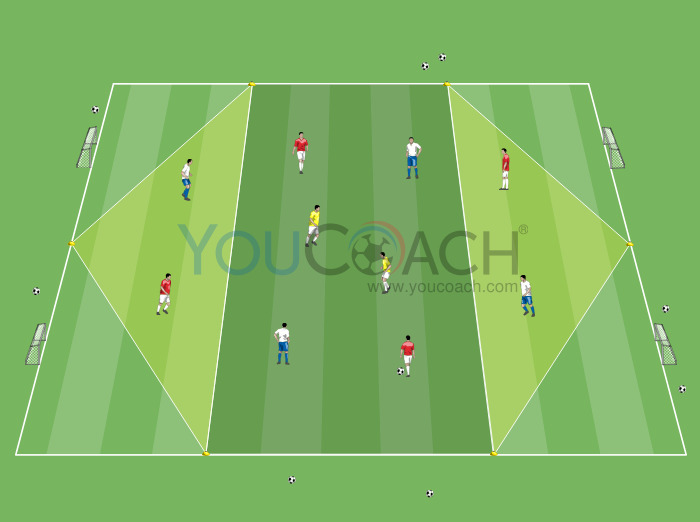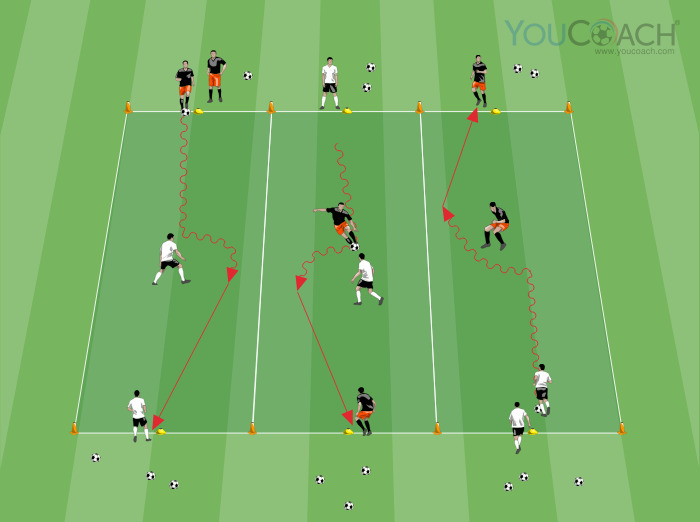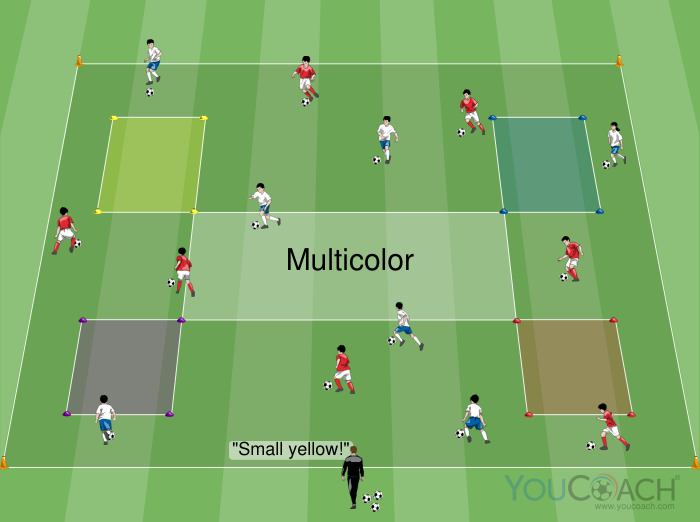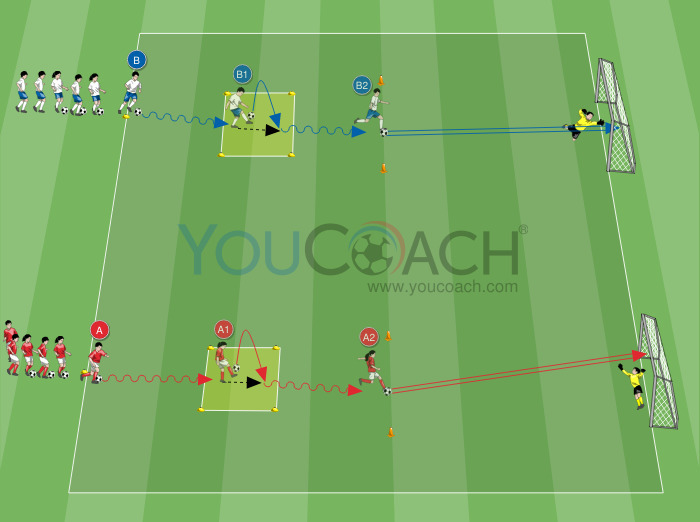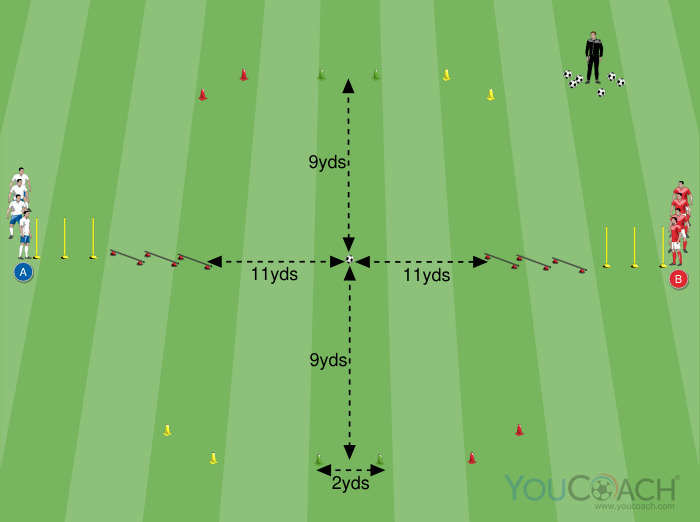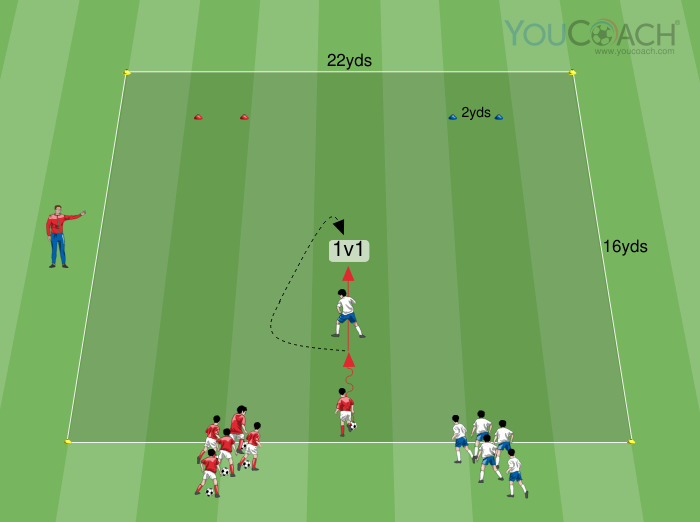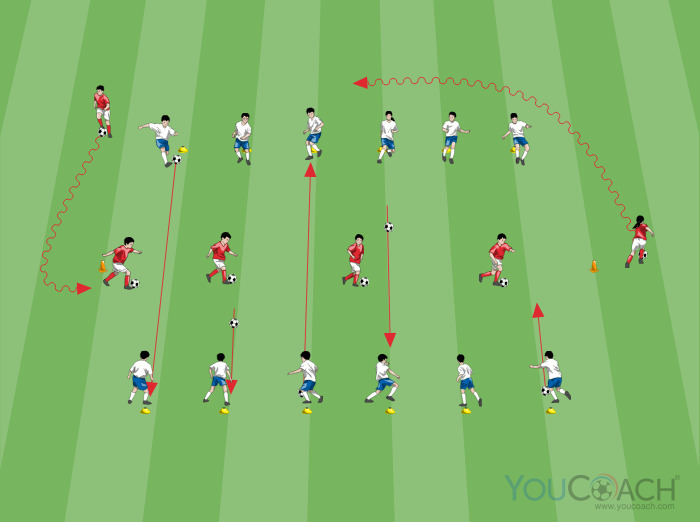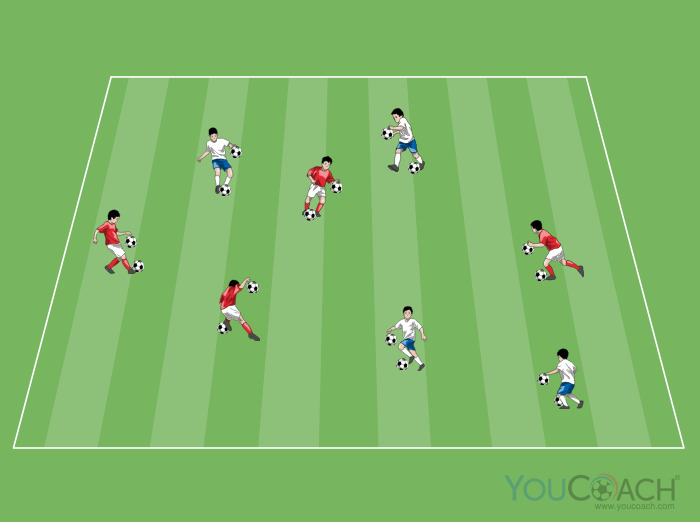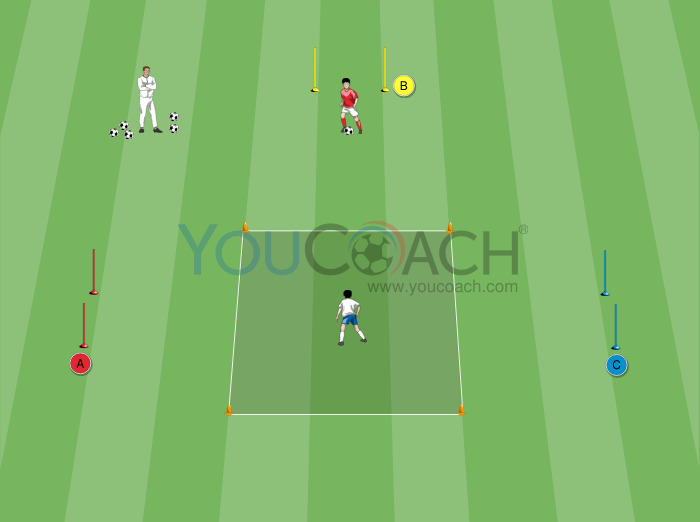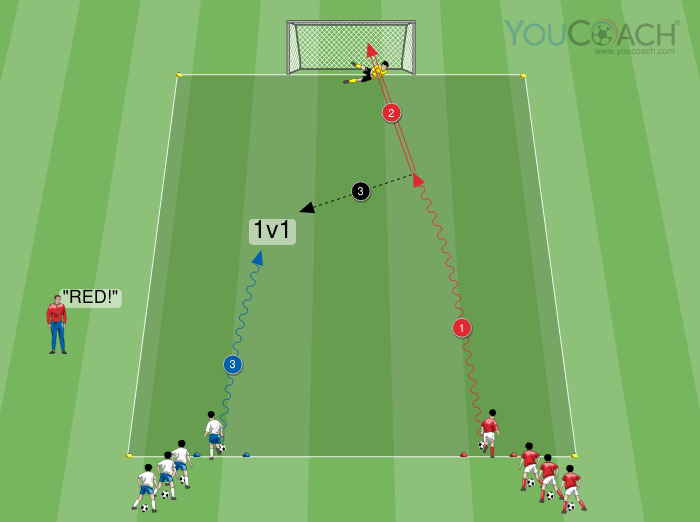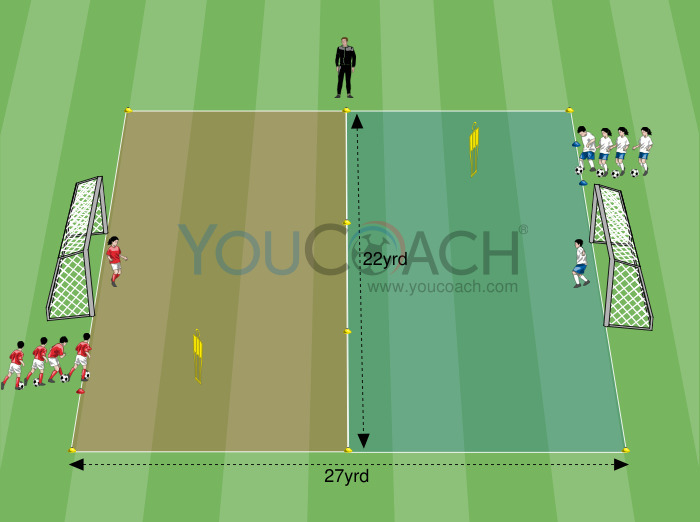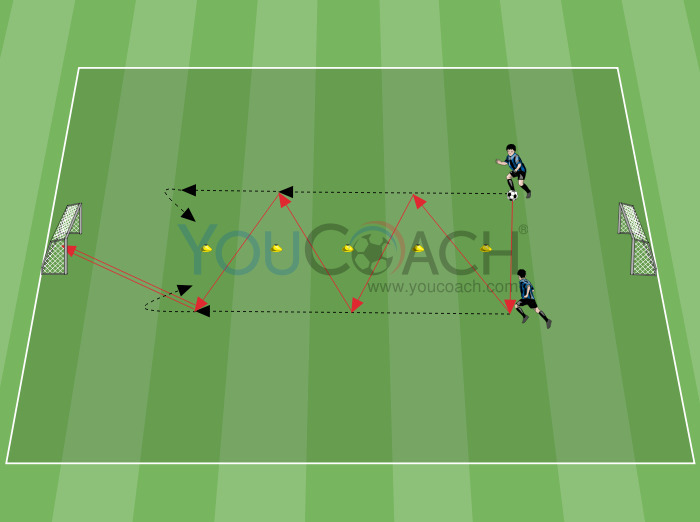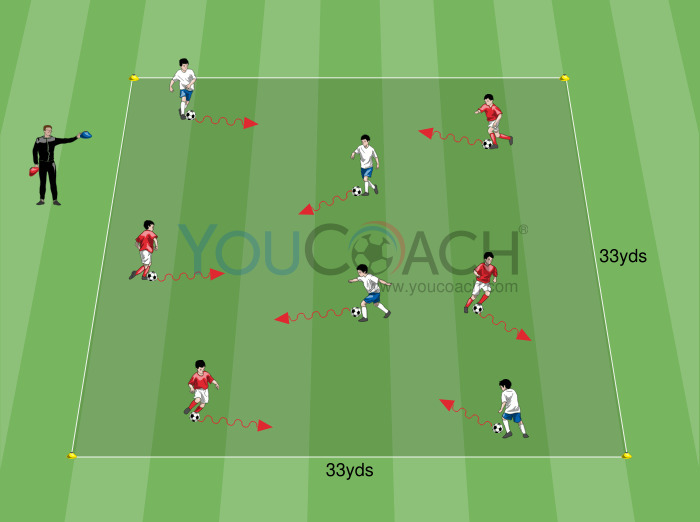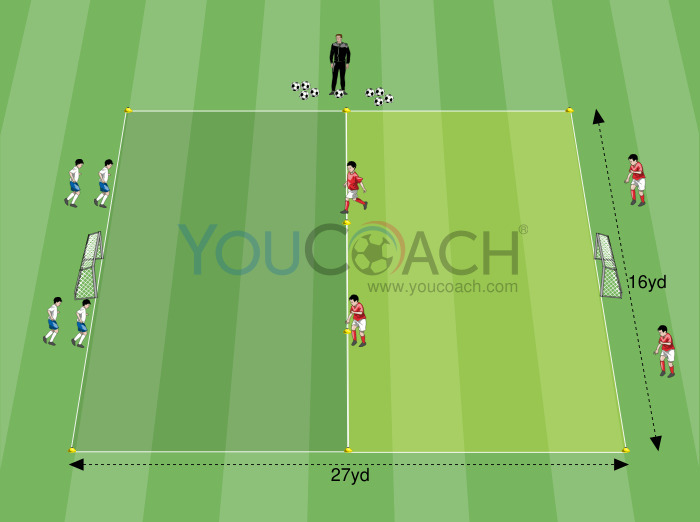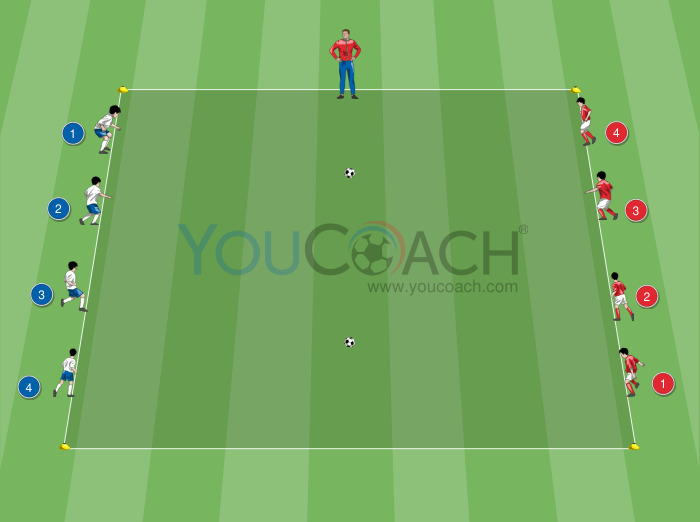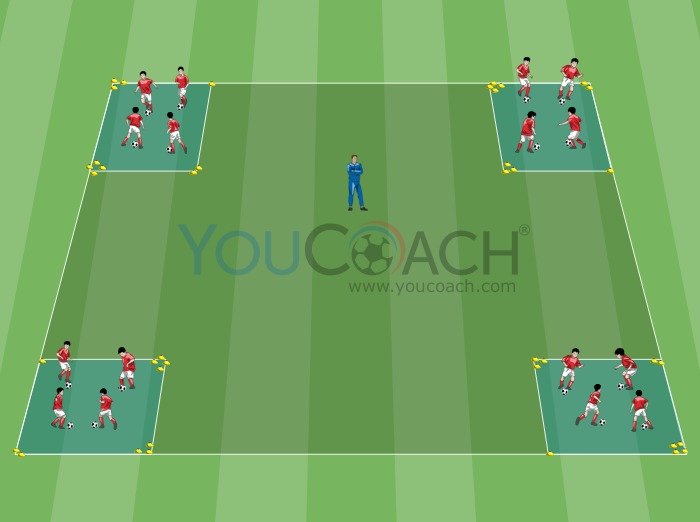Conditioned game 1 v 1
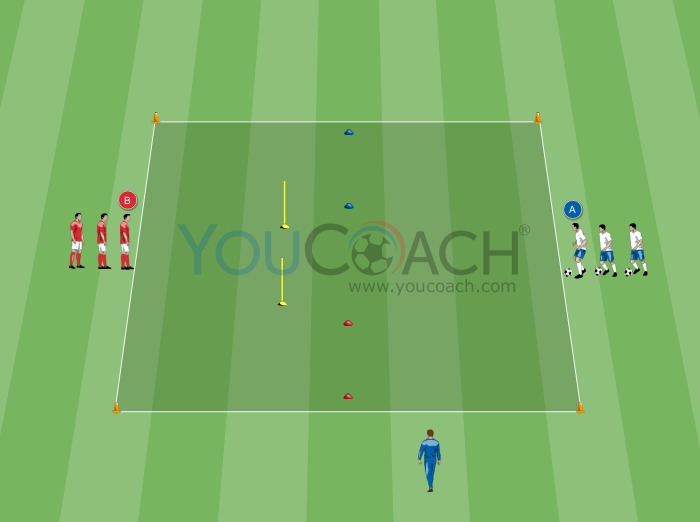
- 4 cones
- 4 markers (2 per color)
- 2 poles
- Vests
- Balls
- Playing area: 15x15 meters/ 16x16 yards
- Players: 12
- Duration: 12 minutes
- Series: 2 of 4 minutes each with 2 minutes of active recovery in between
| Summary | Secondary Objectives |
|---|---|
|
Conditioned game to train dribbling and tackle in 1 v 1 situation |
Dribbling, 1v1 attacking, 1v1 Defending, Tackling, Reaction time, Perception, Vestibular information, Cognitive, Dribbling with feints, Dribbling to prevent the opponent, Ball control, Tackling, 1 versus 1 |
With four cones, create a 15x15-meter/16x16-yard square-shaped playing area. Inside the square place two pairs of markers to form a horizontal line in the center of the field. The two pairs of markers are different colors (red and blue in the picture) and are placed sideways to form two 5-meter-wide goals: one to the right and one to the left of the players' starting position. Between the two goals place a pair of posts (yellow in the picture) slightly shifted toward the starting side of the defending team (red team). The posts form a gate about 4 meters/yards wide. Using the jerseys divide the players into two teams, team A (white players) with the ball and team B (red players) in the defensive phase.
- The coach calls out a color: YELLOW, RED, BLUE
- Player A, first in the row of white attackers, starts dribbling attempting to pass through the mini-goal of the color indicated by the coach (red in the example)
- Player B, first in the row of red defenders, quickly sprints through the gate formed by the yellow posts and tries to counter, in active defense, player A by attempting to keep them from getting past the red goal
- If the white attacker manages to evade the red defender's intervention and gets past the goal, a point is awarded
- With a point awarded or a winning interception by defender B, the action stops and the players return to their starting positions
- At the end of the first series, the two teams reverse starting positions and consequent roles
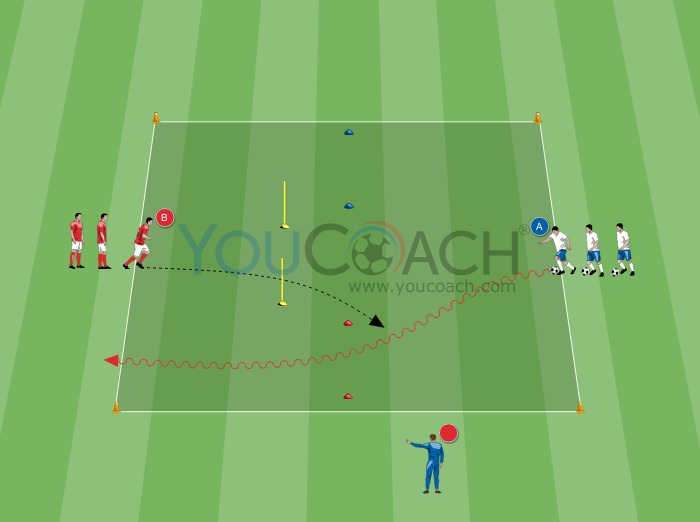
- The team that, at the end of the two sets, has scored the most points wins
- Each time player A goes past the goal in the color indicated by the coach while running with the ball, their team gets one point
- Each time player A goes past the indicated goal and while dribbling manages to reach the opposite side of the field, compared to the starting side, they score two points
- Indicate the shape of the target (posts or markers), in the case of markers the attackers have the option to choose which pair of markers to attack (whether the red or the blue) as they like, trying to mislead the defender with feints and changes in direction while dribbling
- Limit the time of the attacking action
- Stimulate competitiveness
- The variation with markers/posts makes the role more difficult for the defender, who must be ready to react to the attacker's decision
- Encourage players to use both feet during various dribbles, increasing the unpredictability
- Stimulate players to keep the ball close to their feet at all times
- Accustom players to using arms and hands as sensors of the opponent's position


